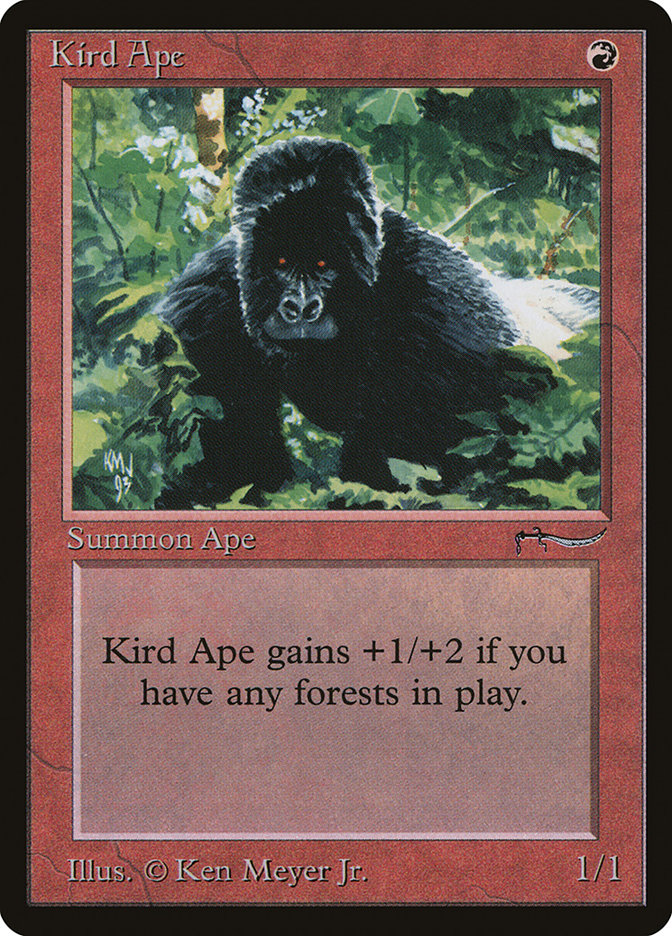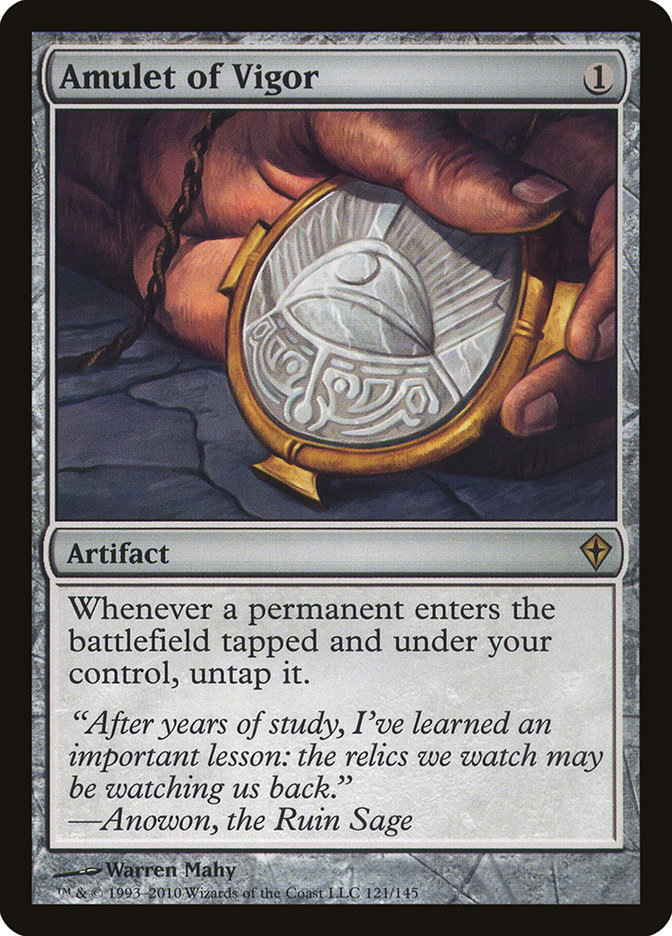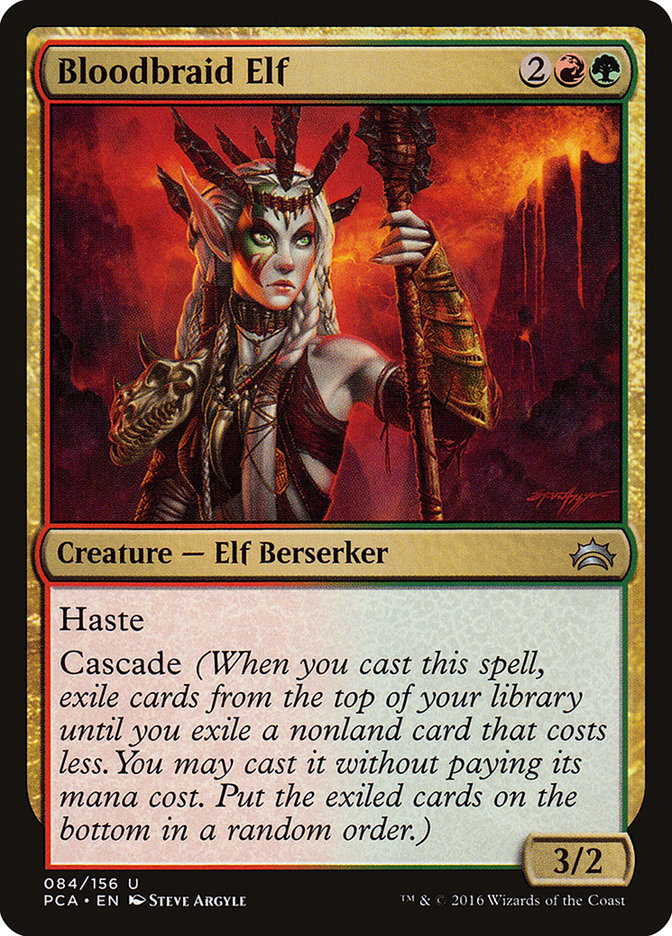It seems as though last week’s article rustled some of your jimmies. Good. If your jimmies remained unrustled, you were not paying enough attention.
Yes, it’s true, my jimmies were awfully rustled by the surprise unbanning of some truly polarizing and powerful spells in a heretofore peaceful, diverse, and relatively balanced format. The main point of all this bellyaching was, at its core, quite simple. When a format is already wildly successful, it does not make sense to introduce outside variables if your stated goal for the banned list is to curate a format that is “the most fun [it] can be.”
Where there is little room for improvement, a light touch is far preferable to a heavy one. There is risk in introducing these powerful cards, and a fairly low possible upside. If a fun, popular, and enjoyable format is your only metric, risky unbans at this time are a low-EV play, to borrow a Magic term. High-risk, but low-reward. The fortuitous coincidence that the unban is occurring a mere month before the release of Masters 25 might make a skeptic think that Wizards was leveraging the relatively safe waters of Modern to try to pass in a risky card in order to sell the set. Unfortunately, there is a future where Wizards has to re-ban Jace, and that future is so undesirable that it is not worth risking in order to push a new set. Of course, others think differently, and they made that decision differently from how I would have. C’est la vie.
Now, to be clear, the time for criticism is passing. The prediction has been made, and while we wait to see how the future unfolds, it is time to dive deep into the next cycles of the Modern metagame and how you can take advantage of it while others remain stuck in old mindsets.
A few select decks get significantly better at the outset and are likely to increase in metagame representation in the coming weeks. Foremost among them are the blue Jace decks, generally inspired by Alex Majlaton’s, Gabriel Nassif’s, and Corey Burkhart’s Pro Tour Rivals of Ixalan decks, yet changing significantly in that they can suddenly close games out faster via the powerful mythic. With Spreading Seas, Field of Ruin, and sideboarded Stony Silence to fight Tron effectively and Jace, the Mind Sculptor to push an advantage in the middle turns, U/W Control can handle fights on the top-end. Path to Exile, Snapcaster Mage, and sideboard hate come in to answer aggressive decks like Burn and Affinity on the low end, and suddenly a first-level predator takes shape.
Creatures (4)
Planeswalkers (5)
Lands (25)
Spells (26)

The one weakness of U/W Control? Other Jaces. With only a few Detention Spheres, Cryptic Command bounces, and Vendilion Cliques as possible answers to a resolved Jace on the other side of the battlefield, suddenly the hunter finds itself becoming the hunted. This is where the Jace decks with Lightning Bolt come in.
Corey Burkhart’s Grixis Control deck had pronounced weaknesses to Burn and (to a lesser extent, thanks to Field of Ruin) Tron, but it was strong against aggressive creature decks like Humans and midrange decks like the newly resurgent Jund. It gets better the more midrange-y the format gets and the narrower its band of enemies. When it can target a format, Grixis Control with Jace can beat just about everything.
The minor graveyard theme from cards like Thought Scour; Tasigur, the Golden Fang; Kolaghan’s Command, Logic Knot, Search for Azcanta, and Snapcaster Mage remains after the replacement of Tasigur (weak to Jace bounces) with a Jace, Vryn’s Prodigy, but the core concept remains the same: grind hard, position yourself to stick a Jace, and win the semi-mirrors through Kolaghan’s Command loops and better answers to the powerful planeswalker. This may become the new Grixis Death’s Shadow, a gatekeeper of the format favored by players who enjoyed managing resources, but this one lets you toy with your opponent before you finish them off with the best planeswalker of all time.
Creatures (5)
Planeswalkers (3)
Lands (26)
Spells (26)

There is a ton of room for maneuvering here, with cards like Spell Pierce gaining value in the Jace battles, Spreading Seas or Fulminator Mage working hard against Tron, and discard like Thoughtseize, Inquisition of Kozilek, or even Vendilion Clique promoting a slightly more proactive, cheaper style of play. It may become necessary to slim down the deck, as all those Jaces, Cryptic Commands, and Kolaghan’s Commands are looking a bit chunky. With Jace to keep cards flowing, it pays to make those interactive cards cheaper so you can cast multiples every turn to bury your opponent. Additionally, discard spells can clear the way for a Jace in the middle turns in a way that reactive Cryptic Commands can’t.
Jeskai would normally be the next Jace deck up for examination, but there are some more exciting small-cap decks that merit discussion first. Primarily, Blue Moon has resurfaced as an option for Jace aficionados, and the presence of Blood Moon can present similar prophylactic measures against Tron, just like Field of Ruin did in the above decks. Both Blue Moon and Temur Moon are reasonable options, but for brevity’s sake, this list by Gul_Dukat (a fearsome and enigmatic Magic Online foe, to be sure) is an intriguing starting point:
Creatures (8)
Planeswalkers (4)
Lands (21)
Spells (27)
- 4 Disrupting Shoal
- 4 Lightning Bolt
- 4 Serum Visions
- 2 Blood Moon
- 4 Opt
- 4 Remand
- 2 Electrolyze
- 3 Cryptic Command
Sideboard

Disrupting Shoal is Modern’s weak cousin to Force of Will, but clearly Gul_Dukat is trying to emulate a Legacy control deck with Jace ready to pick up the slack caused by the free counterspell’s card disadvantage. I might personally have a third Blood Moon, as Jace can put extras away when they’re bad, but there is a lot to like about this list. Entrancing Melody is an elegant answer to threats like Tarmogoyf and Death’s Shadow, and Thing in the Ice made waves in the last Pro Tour, so there just might be enough cool stuff going on to make this deck legitimate.
To be fair, unlike the more “normal” Jace decks, the inflexibility of the removal in straight U/R means that a deck like Grixis Death’s Shadow can potentially develop a battlefield that not even a Jace, the Mind Sculptor can fix. Cards like Fatal Push, Terminate, Dreadbore, and Path to Exile are generally recommended in non-inbred metagames, and their absence is part of the reason Blue Moon has struggled in the past. The future may get to a point where those removal spells are less necessary, but for now, Grixis, Jeskai, and U/W are more flexible.
There are a few other fringe strategies that can employ Jace to great effect, including one that Edgar Magalhaes has been advocating for over a year now, Amulet Bloom. It’s not unreasonable to put out a Jace on the second or third turn with a Sakura-Tribe Scout and an Amulet of Vigor, and the deck’s traditional avenue for victory (third-turn Titans) is still plenty strong enough to beat many of the other linears of the format, such as Dredge, Hexproof, and Tron. Midrange Jund is a good matchup, simply on the back of Primeval Titan and the built-in card advantage of the bouncelands.
Should Blue Moon be the most popular Jace deck of the format, Amulet Bloom will linger on the sidelines, but otherwise, there is reason to expect that it will come out of the woodwork at one or two events to great effect. This is the true heir to the turbo-land Jace deck that has been missing from Magic for ages.
On the other side of the metagame, Jund Shadow with Bloodbraid Elf and traditional Jund are both fantastic options for the Tarmogoyf fans among us. With sufficient Fulminator Mages to hedge against Tron and Dreadbores and Bloodbraid Elves to kill Jace quickly and efficiently, Jund is far from dead. There is natural tension between the lean, mean, mostly-one-and-two-mana killing machine that is Jund Death’s Shadow and the newly unbanned Elf, but the card is naturally powerful against Jace, and as such it deserves its place in the deck.
Provided that the metagame begins to consolidate into mostly Jace decks and Jund, there is a deck well-positioned to take advantage of that monotony, inspired by Grzegorz Kowalski’s recent GP win with G/R Eldrazi. (Incidentally, is it possible that he won because G/R Eldrazi kind of sounds like how a six-year-old might try to pronounce Grzegorz Kowalski?)
Bloodbraid Eldrazi, piloted by another Magic Online ringer, vanderwll, plays so many hasty threats that it can be hard to ever reliably land and protect a Jace from the side of the blue control player, and the type of threats are ready to give control players fits. Bloodbraid Elf, Reality Smasher, Hazoret the Fervent, and Thought-Knot Seer, all backed up with Cavern of Souls to push them through, are a true stake in the heart of Jace decks everywhere, and as long as there are few swarm aggro decks and combo decks, this big beatdown strategy is beefy enough to outclass Jund and hasty enough to pummel control. It’s narrow, but when it works, it’s perfect:
Creatures (22)
- 4 Bloodbraid Elf
- 4 Eldrazi Obligator
- 4 Reality Smasher
- 4 Thought-Knot Seer
- 4 Matter Reshaper
- 2 Hazoret the Fervent
Lands (23)
Spells (15)

Ah, the classic Eldrazi Temple / Blood Moon deck! Talisman of Impulse does wonderful work here and makes it plausible to play Moon against Tron, but even so, it hurts to see. Regardless, the secret sauce here against all non-Path to Exile decks is, you guessed it, Hazoret the Fervent. If this card resolves, it makes life very difficult for Grixis and Jund, although it also ends the game rather quickly, so in that regard it is most welcome. If Hazoret picks up, it may be necessary to play U/W or Jeskai rather than Grixis, as a Cavern of Souls naming God is going to make some players very, very sad. This is the deck I’d give to my little brother if he wanted to come to a Modern tournament with me, and there’s no shame in putting a couple of beef patties down on the table and telling your opponent that they are in for a world of pain. It’s the simple things in Modern, I tell you!
Of course, playing a Bloodbraid and only ever cascading into randomness is kind of, well, boring. If you want to play Bloodbraid Elf but you also want to play Jace, there is only one recommendation I can make with any authority, and it’s a doozy. Combining the fun of Cascade, free spells, Blood Moon, and Jace, this is by far the coolest way to abuse your formerly banned cards, thanks to Magic Online user J.A. Eliso:
Creatures (15)
Planeswalkers (3)
Lands (22)
Spells (20)

Wow. This looks, dare I say it, fun. I haven’t cascaded a Bloodbraid Elf into an Ancestral Vision in many, many years, and I can’t wait to try it. The only hanging-up point here is the scanty combo disruption, limited to Izzet Charm and one Vendilion Clique. I’d get two more of those Faeries in here for sure over Snapcaster Mage and Tireless Tracker, as in a King Jace format, Vendilion Clique is queen. A bit more removal in the vein of Anger of the Gods, Izzet Staticaster, or Grim Lavamancer might be welcome, and I even have half a mind to try something like Threads of Disloyalty for other Tarmogoyf decks. However, this is a tremendous first effort at stitching together a number of formerly banned cards to try to push the envelope of the format as far as it’ll go.
Some say that the only escape from the existential dread of our own mortality is to lean in, embrace risk, and spit in the face of death. Paradoxically, maybe that attitude is the healthy way to look at Modern. If Jace and Bloodbraid Elf really are about to rip Modern in half in a meta-metagame tug-of-war, I suppose at this point there’s nothing better to do than laugh and enjoy the thrill.
You want to unban cards like Jace and Bloodbraid Elf, Wizards? F**k it, let’s dance!




